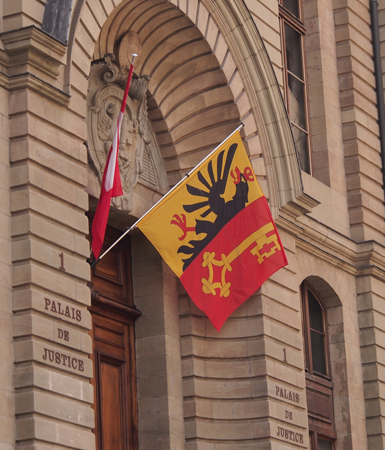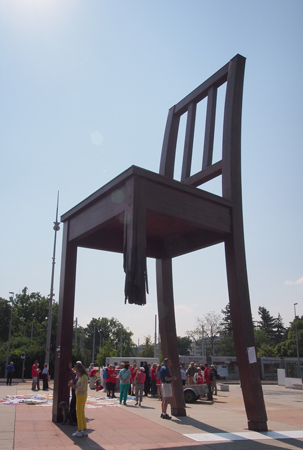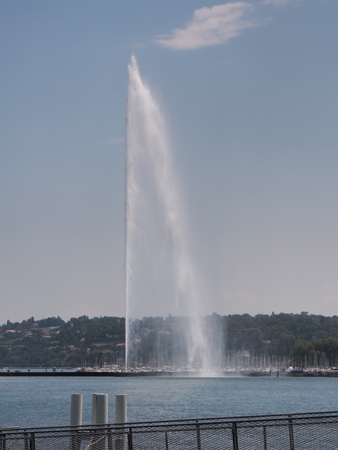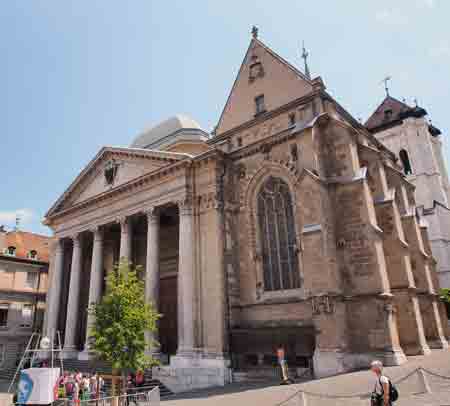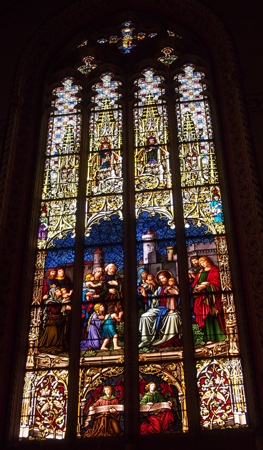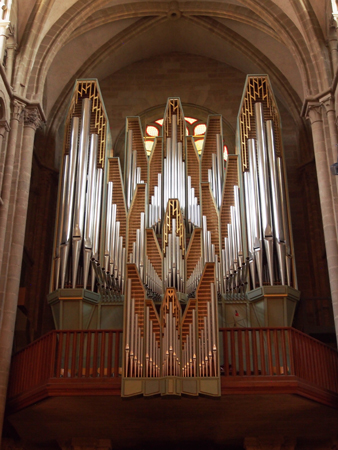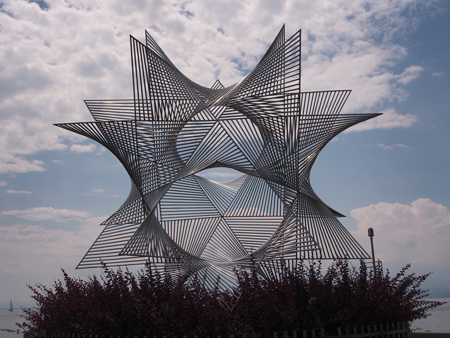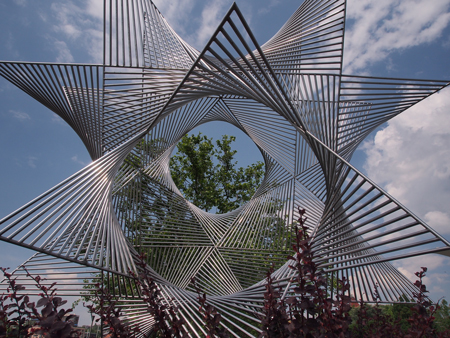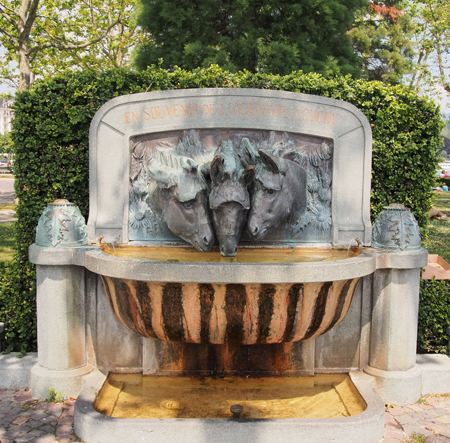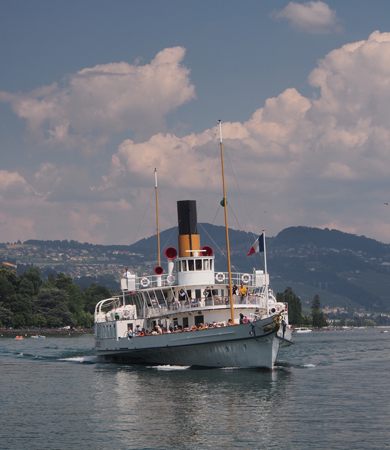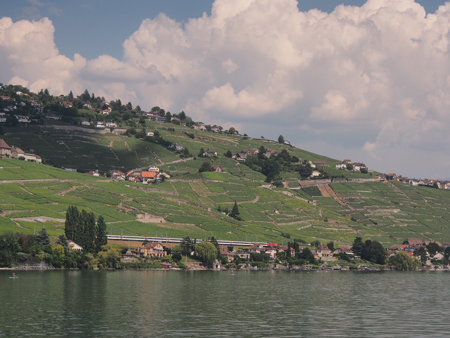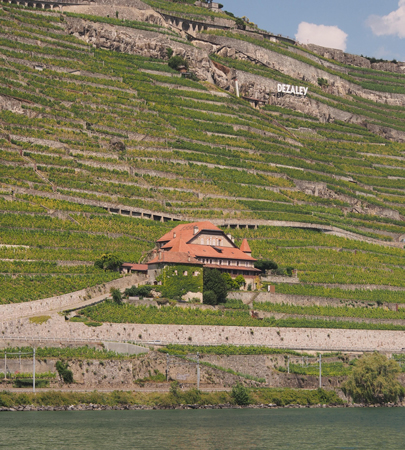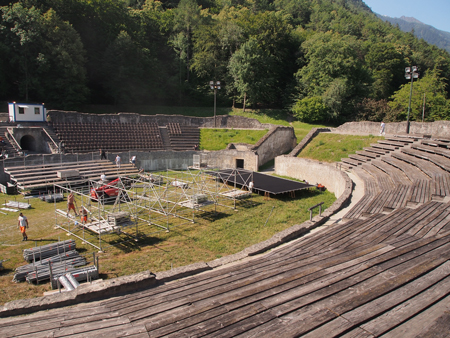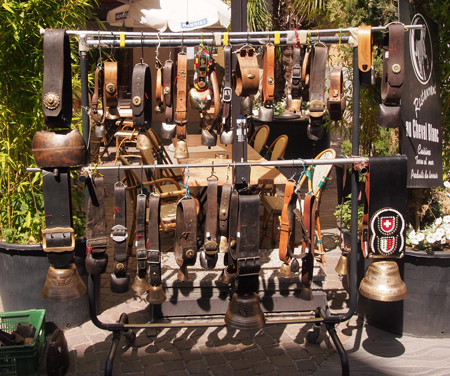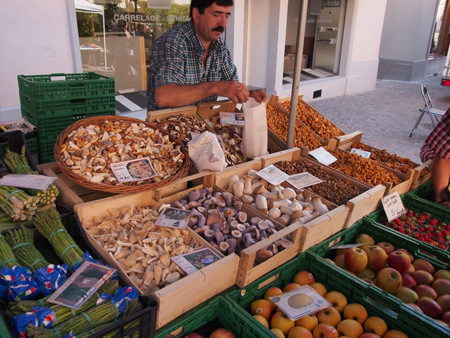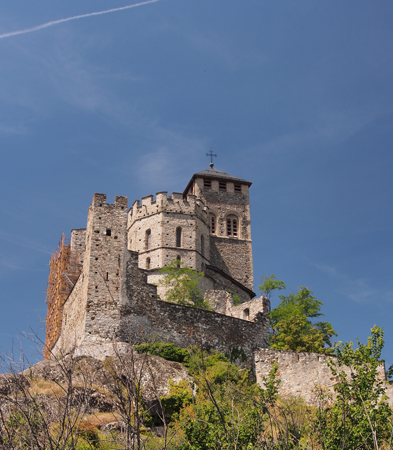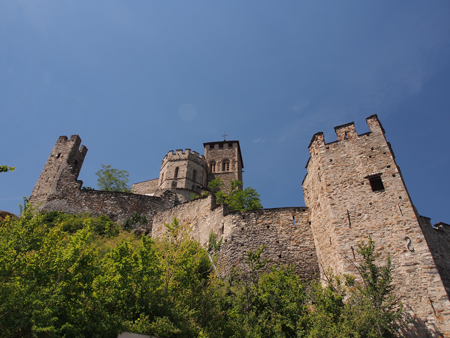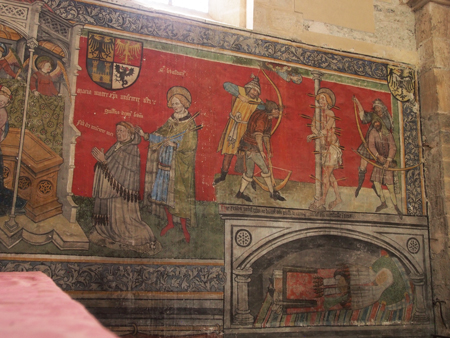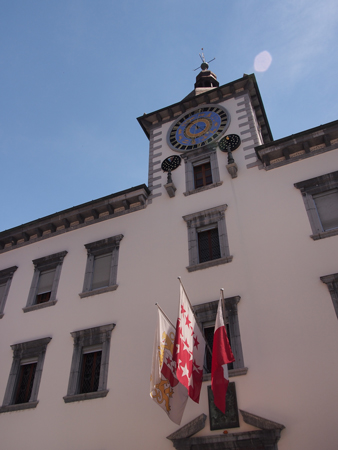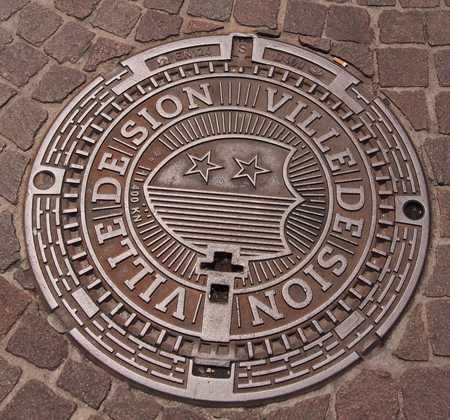Thurs., 6/19/14 – Montreux and Geneva
Today was a long day. Our bus took us along the north shore of Lake Geneva (most of the south side belongs to France). Once again we traveled through many tunnels and over high bridges as the terrain was quite mountainous in places. The hilly slopes down to the lake were mostly terraced grape vines and trimmed apple trees under sun/bird screens.
It took about two hours in heavy traffic to get into the international city of Geneva. Since Geneva was once French and is right on the border with France, French is the first language and English is the second language spoken here. Many people commute from France to work in Geneva because it is cheaper to live in France but salaries are higher in Switzerland.
Flag of the Canton of Geneva
|
We first drove around the Avenue de la Paix (Avenue of Peace) where many of the international organizations have their offices. We got off the bus for a photo stop in front of the main entrance of the UN – the Palace of Nations. The building is one-mile long! Across the street is a huge chair sculpture with one leg broken off – called the Broken Chair monument. It was erected by Handicap International to symbolize opposition to land mines and cluster bombs.
|
Palace of Nations
|
Broken Chair monument |
Next we went to visit the Reformation Monument. In the 1500’s John Calvin preached and taught in Geneva and the city was known as the Protestant Rome. He and John Knox and William Farel and Theodore Beza were the successful reformers remembered at the monument.
|
Reformation Monument
|
Our bus eventually parked by the Flower Clock and the Water Spout at the harbor. The Jet d’eau spurts water 450 feet high at 150 MPH and operates as long as the wind does not come up. The Flower Clock is the symbol of the Geneva watch industry.
|
|
Jet d’eau
|
Flower Clock |
We walked on to the Cathedral of St. Peter. It was built on Roman foundations and was a Catholic church until John Calvin began preaching reformation inside. The sanctuary is huge – holds a lot of people – and is sparse with only a few stained glass windows. |
Cathedral of St. Peter
|
Chapel of Maccabeus
|
Organ |
|
We found our way back down to our bus and rode to the city of Lausanne to get on a side-paddle paddle-wheel boat (LaSwiss) for a boat ride along the north shore of Lake Geneva back to Montreux. The lake is 45 miles long and as much as 8.7 miles wide and 1020 feet deep. We sat in first class on the stern deck and enjoyed seeing the towns and vineyards go by.
|
|
Ouverture au Monde - stainless steel sculpture
|
Ouverture au Monde - stainless steel sculpture |
Horse fountain |
LaSwiss - paddle wheel boat
|
Mostly vineyards
|
Mostly vineyards |
Mostly vineyards
|
For dinner we walked to the Co-op and bought chef salads, complete with dressing and a plastic fold up spoon/fork, bread, four types of cheese to try, and chocolate donuts for dessert. This cost us 24 CHF (about $28)! It was still cheaper than eating out.
|
Fri., 6/20/14 – Montreux to Zermatt
We traveled up the Rhone River Valley to the foot of the St. Bernard Pass. The valley is irrigated and grows fruit trees (apricot, apple, and pear), grapes, strawberries, and corn. We stopped to look at the 200 AD Roman ruins at Martigny. There were some unearthed building foundations and a small (5,000 seat) amphitheater. Enough of the amphitheater remains to use it for concerts, film festivals, and cow fights. Black Herens cows are bred here. They have short legs and large horns. When they fight they lock horns and push and shove each other to establish dominance. People bet on which cow will push the farthest. The area is also famous for purebred St. Bernards and the town has a St. Bernard Museum.
St. Bernard Museum
|
Roman Amphitheater - being set up with a modern sound stage |
Poster illustrating cow fights
|
The next town was Sion, supposedly the oldest town in Switzerland. The town was Christianized in the 4th c. and has a cathedral and old monastery, which is no longer in use. We walked to the fortified church, Notre Dame Cathedral, in town with a 1300’s organ, which is the oldest that is still played.
|
Flag of the Canton of Valais
|
Notre Dame Cathedral |
Fridays are market days in Sion and we walked the cobblestone street looking at booths and trucks selling everything under the sun: meats, bread, roasted chickens, sweets, plants, clothes, cosmetics, etc.
|
Assorted cow bells
|
Market
|
We looked and then took the hike up to the monastery with its chapel. We sat on a bench to eat our packed lunch and looked across at the remains of the town fortress. It was a very pleasant day and the views were great with many neat vineyards.
|
Chateau de Tourbillion |
|
Chateau Valere
|
Chateau Valere |
Chateau Valere - peaceful walkway
|
Door at Chateau Valere |
Fresco at Chateau Valere |
View from Chateau Valere
|
View of Scion from Chateau Valere
|
Avalanche abatement fences high on the mountain |
City Hall
|
|
Back on the bus and off to the town of Te or Tach to board the train to Zermatt.
| Return to Top | Return to Itinerary | Return to Trips page to view other trips | Return to Dreamcatcher Home Page |
